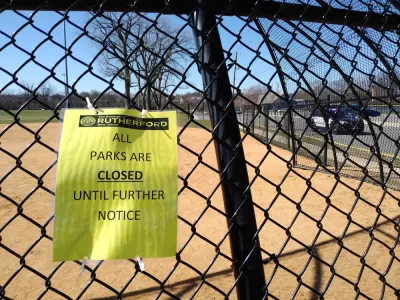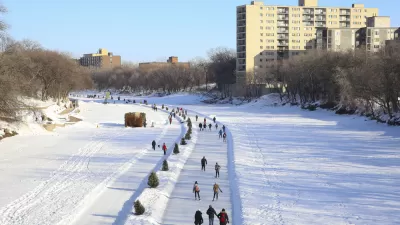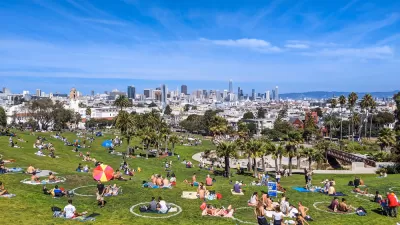Experts indicate that it is too soon to conclude that the lack of access to parks has contributed to higher coronavirus infection rates in Black and Latino communities, but say there is likely a relationship between the two.

Parks offer physical and mental health benefits, but they are not enjoyed equally by all. Not all parks are created equal and not everyone has easy access to parks of the same size and quality.
A recent study released by the Trust for Public Land, and detailed in an article by Trevor Hughes, reveals the following:
- Public parks tend to be significantly larger in areas in which residents are white or of higher income.
- Parks for people of color are half the size and serve nearly five times more people per acre as those for majority-white populations.
- Parks that serve primarily low-income households are on average four times smaller and serve three times more people per park acre, compared to parks for high-income households.
- Parks that serve a majority of low-income people of color are on average about half as big and serve four times more people per acre than parks for low-income white populations.
These realities have relevance to the great public health crisis of the current day, notes Hughes. Compounding the preexisting conditions have resulted in disproportionate rates of COVID-19 deaths among Black and Latino Americans, according to Hughes, "some cities closed down parks or various park amenities as the pandemic spread, taking offline the few parks that some urban residents did have access to."
An expert quoted in the article stops short of concluding that lack of access to outdoor spaces has driven COVID-19 infection rates in Black and Latino communities, but it's possible that further research will reveal suggest a relationship between the two. "I'm hoping that the disparities we've been identifying result in a commitment to resolve them," says Dr. Panagis Galiatsatos from Johns Hopkins University in the article. "If this virus can teach us one thing, it's that disparities are here and present. We have control over ending both the pandemic and the disparities. The pandemic will end eventually, and we will need to figure out how to remove the disparities."
FULL STORY: Segregated parks linked to higher COVID-19 deaths for Black and Latino Americans

Alabama: Trump Terminates Settlements for Black Communities Harmed By Raw Sewage
Trump deemed the landmark civil rights agreement “illegal DEI and environmental justice policy.”

Planetizen Federal Action Tracker
A weekly monitor of how Trump’s orders and actions are impacting planners and planning in America.

The 120 Year Old Tiny Home Villages That Sheltered San Francisco’s Earthquake Refugees
More than a century ago, San Francisco mobilized to house thousands of residents displaced by the 1906 earthquake. Could their strategy offer a model for the present?

In Both Crashes and Crime, Public Transportation is Far Safer than Driving
Contrary to popular assumptions, public transportation has far lower crash and crime rates than automobile travel. For safer communities, improve and encourage transit travel.

Report: Zoning Reforms Should Complement Nashville’s Ambitious Transit Plan
Without reform, restrictive zoning codes will limit the impact of the city’s planned transit expansion and could exclude some of the residents who depend on transit the most.

Judge Orders Release of Frozen IRA, IIJA Funding
The decision is a victory for environmental groups who charged that freezing funds for critical infrastructure and disaster response programs caused “real and irreparable harm” to communities.
Urban Design for Planners 1: Software Tools
This six-course series explores essential urban design concepts using open source software and equips planners with the tools they need to participate fully in the urban design process.
Planning for Universal Design
Learn the tools for implementing Universal Design in planning regulations.
Clanton & Associates, Inc.
Jessamine County Fiscal Court
Institute for Housing and Urban Development Studies (IHS)
City of Grandview
Harvard GSD Executive Education
Toledo-Lucas County Plan Commissions
Salt Lake City
NYU Wagner Graduate School of Public Service





























